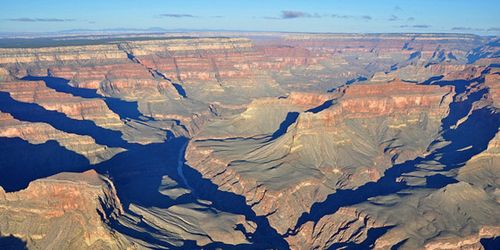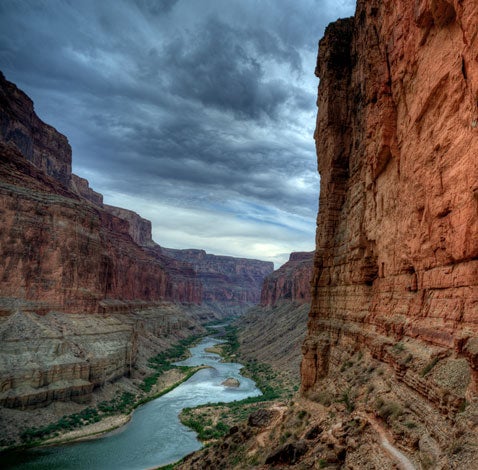
The East Rim of the Grand Canyon, where the Little Colorado River meets the Colorado River, is a remote, quiet area, especially compared to the crowded Southern Rim. But it might not remain that way.
The 27,000 square-mile Navajo reservation is adjacent to the National Park and Navajo President Ben Shelly in late February signed a memorandum of agreement with a development company Confluence Partners, LLC, that could turn the area around the East Rim into a tourist attraction, . The plans include a resort hotel, spa, and RV park. There's also a proposal to build an aerial tram that would bring visitors from the rim of the canyon all the way down to the riverside, where they could get a meal at a new restaurant.
Unsurprisingly, the National Park Service as well as environmental groups are raising red flags.
The proposed development is projected to bring up to $70 million a year in revenue to the tribe and 2,000 jobs. But Grand Canyon park officials and local river guides are concerned that with the development would come enough noise and other types of pollution to negatively impact the area's wildlife—aside from altering the character of the East Rim of the park, which is where visitors who are looking for a backcountry experience often head.
But the real fight might come down to boundaries. : “The proposed attractions could create a jurisdictional dispute, depending on their distance from the Colorado River. The Navajos believe the reservation extends to the high water mark of the Colorado River, while the National Park Service says its boundary is a quarter-mile from the river's bank along the 61-mile stretch of the Colorado before it meets the Little Colorado.”

Shelly has vowed to protect the preserve the sacred Navajo areas in and around the proposed site — known by locals as the confluence. He also initially opposed any development there, and has not approved all of the developer's plans, having verbally rejected the construction of an airport.
The Navajo people are also not in agreement over the proposal. Some would like the land to remain untouched, but others see the plans as a path to prosperity.
–Mary Catherine O'Connor